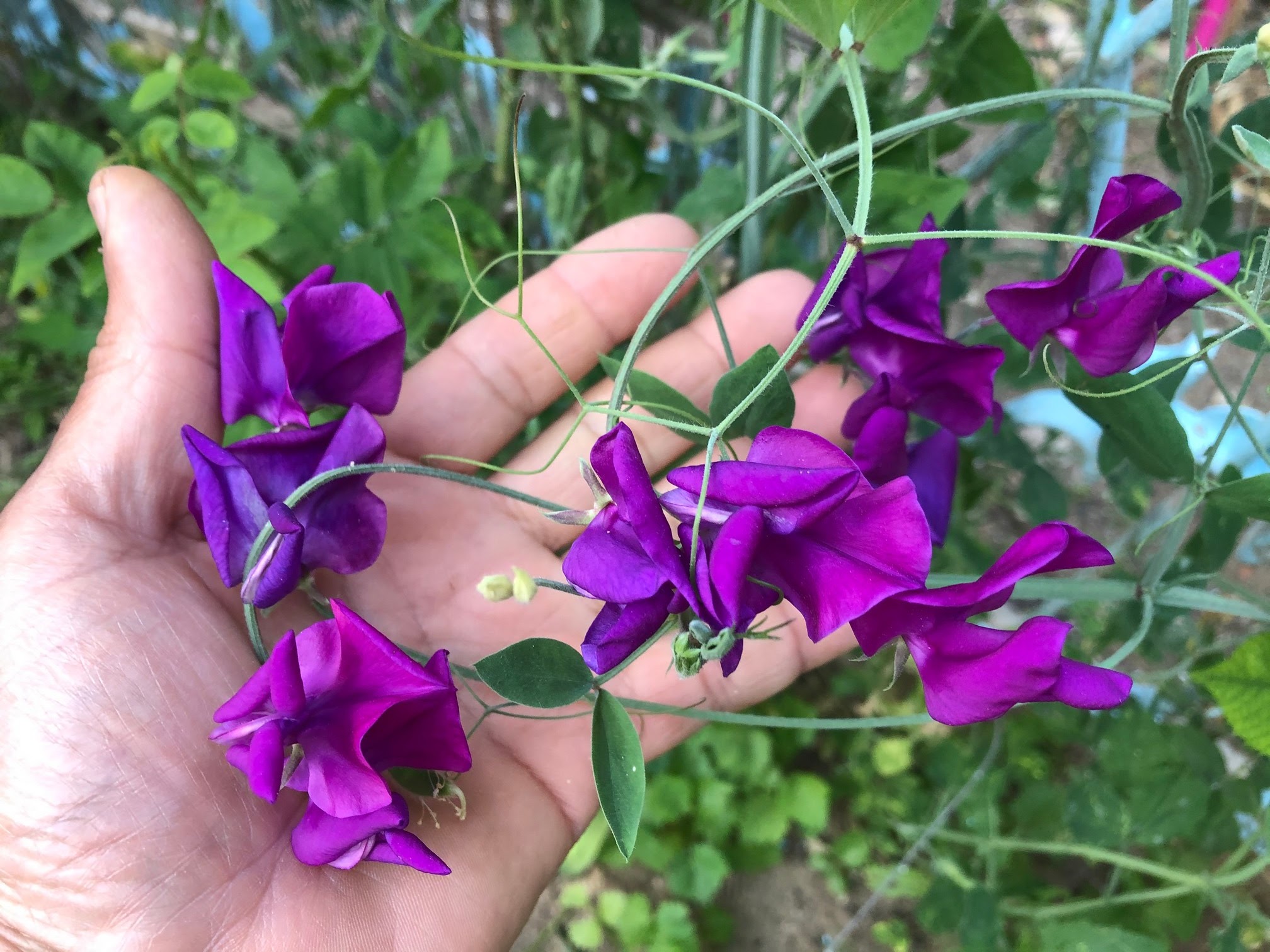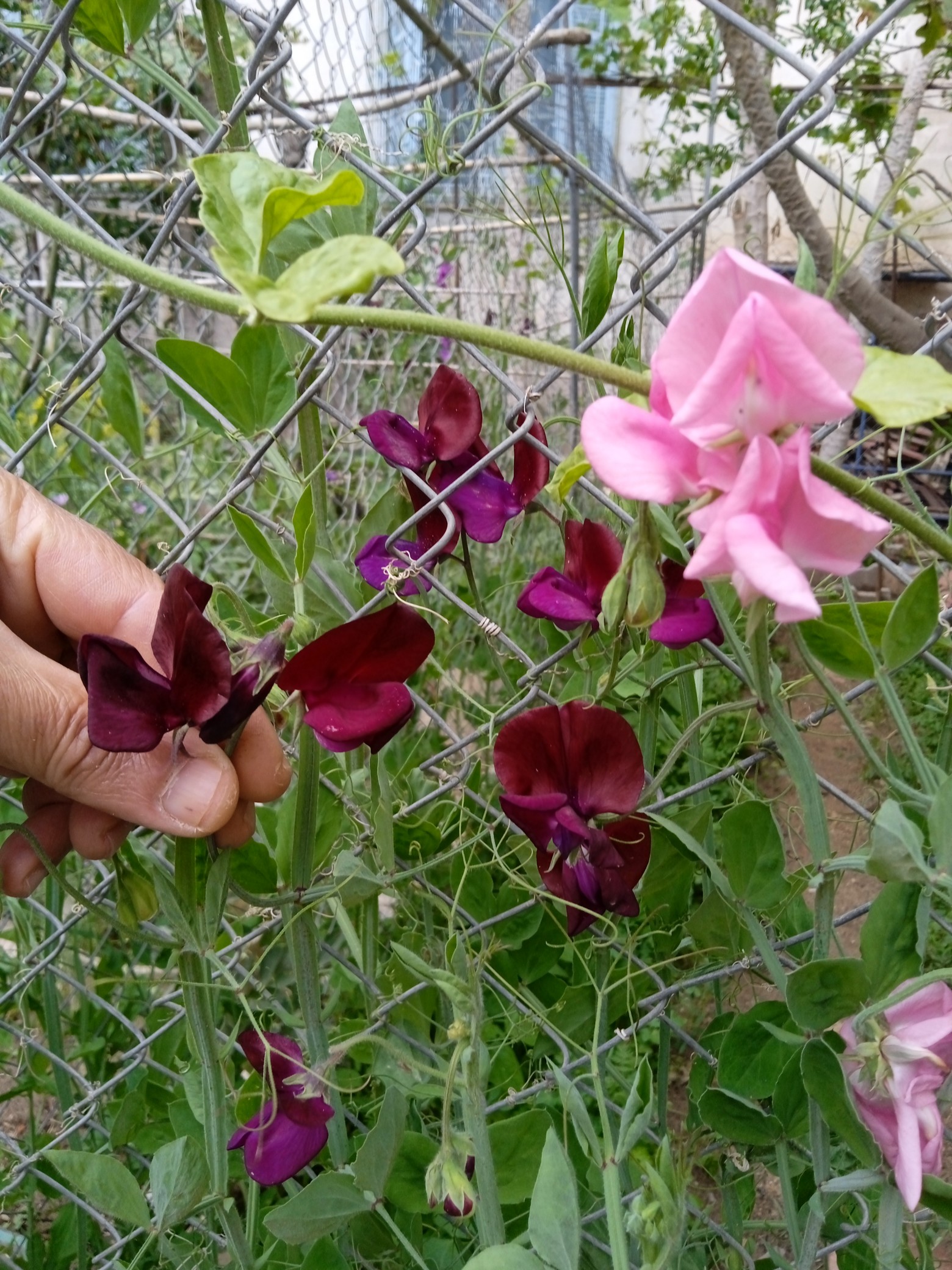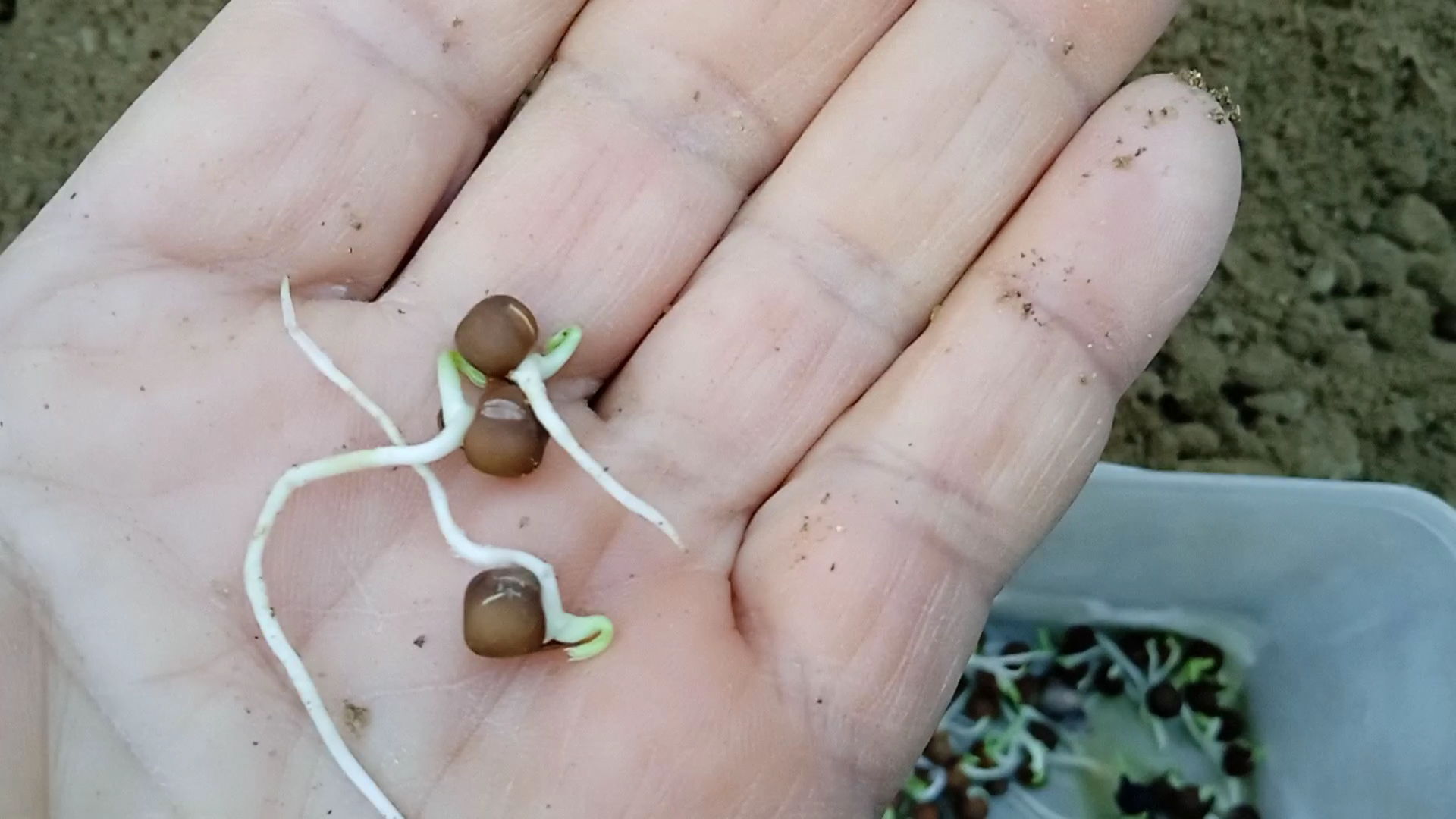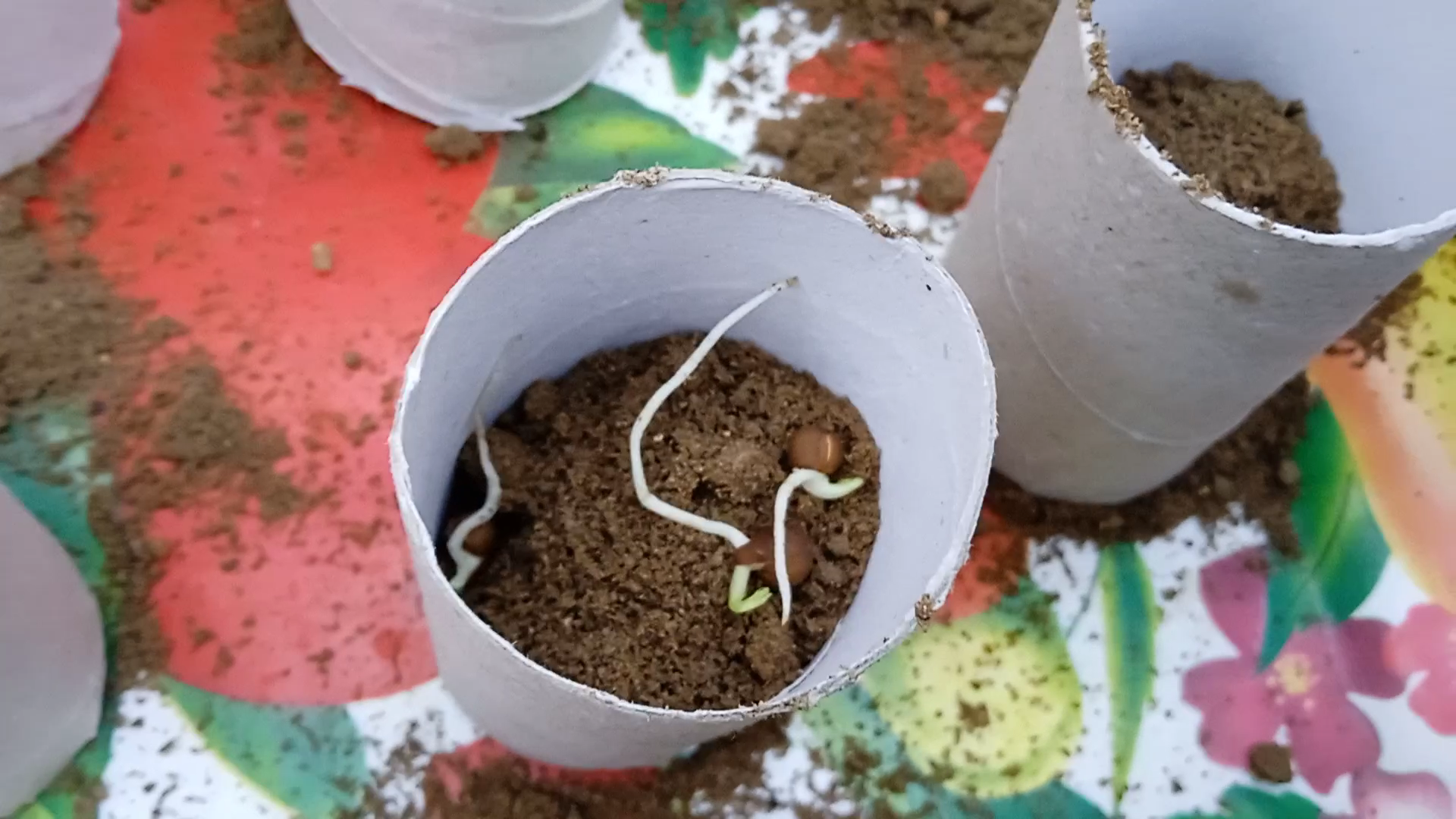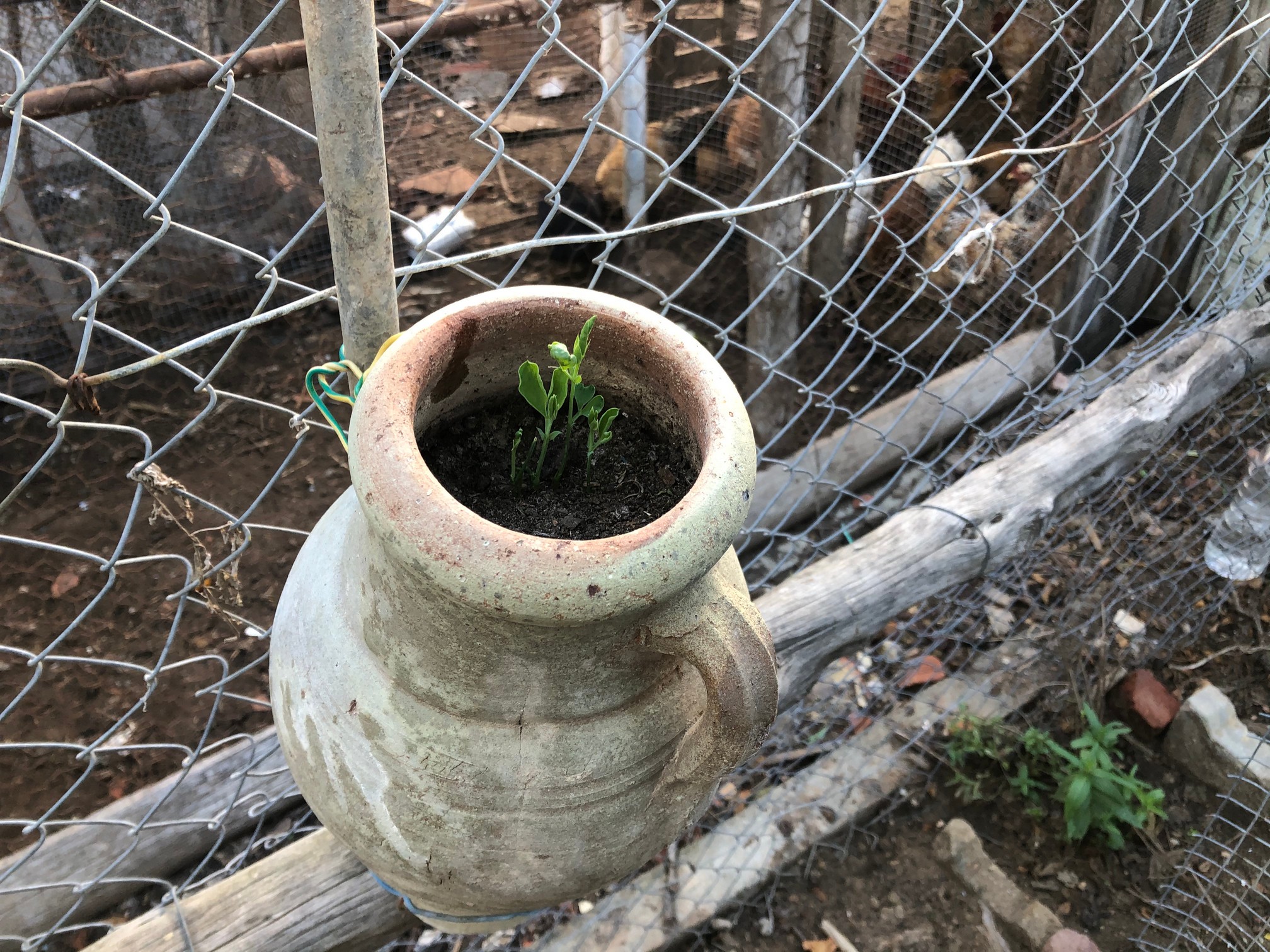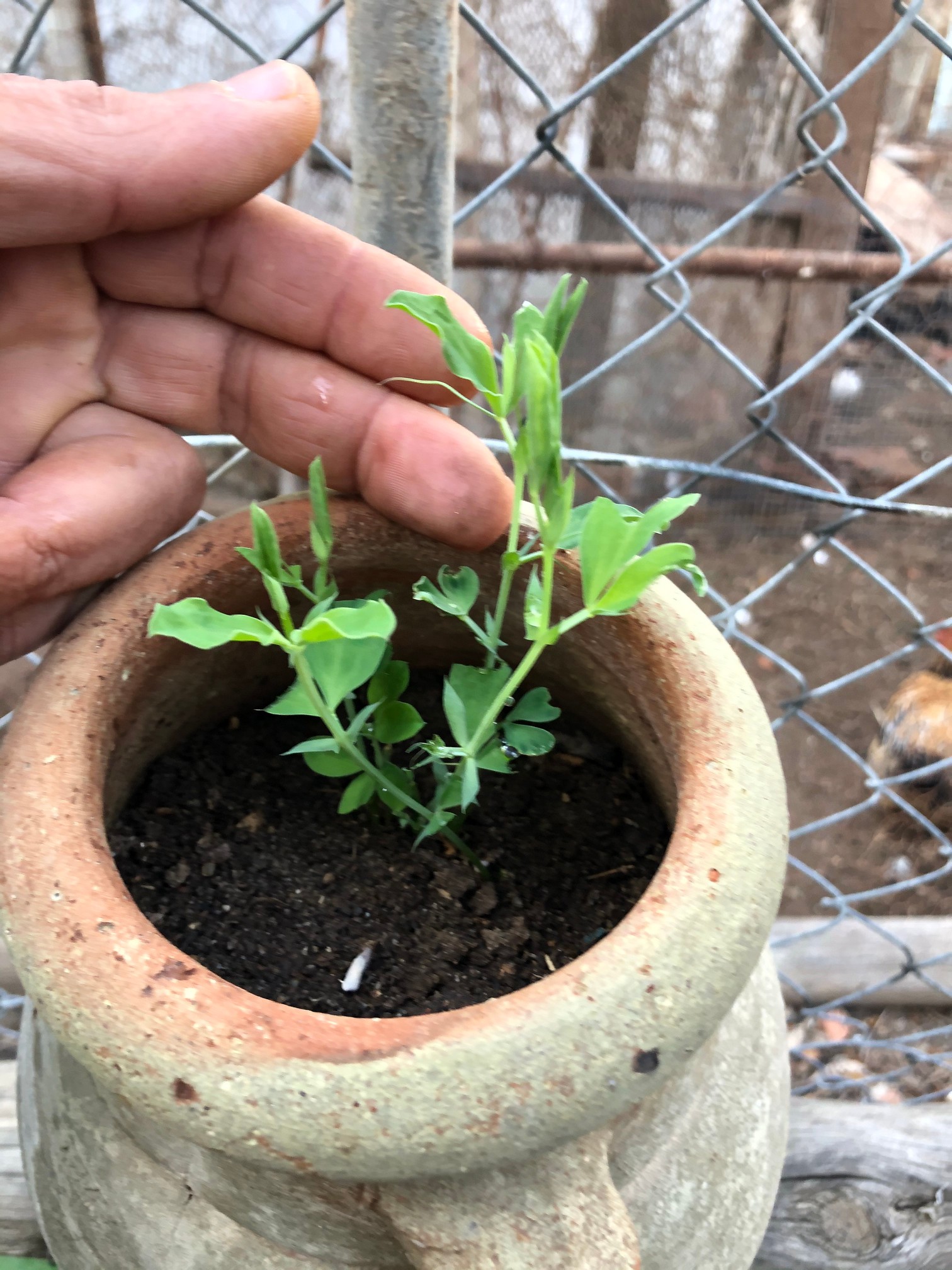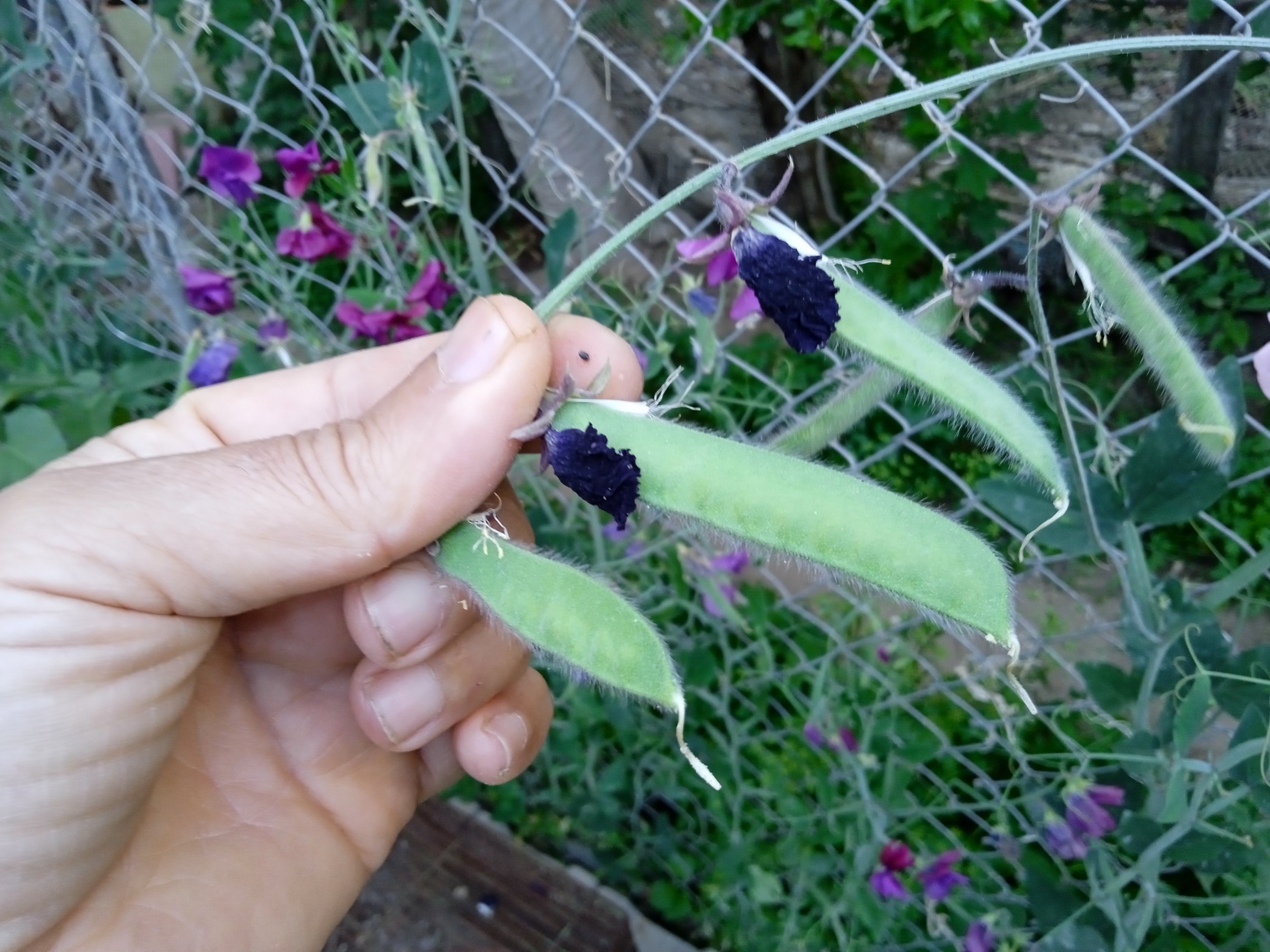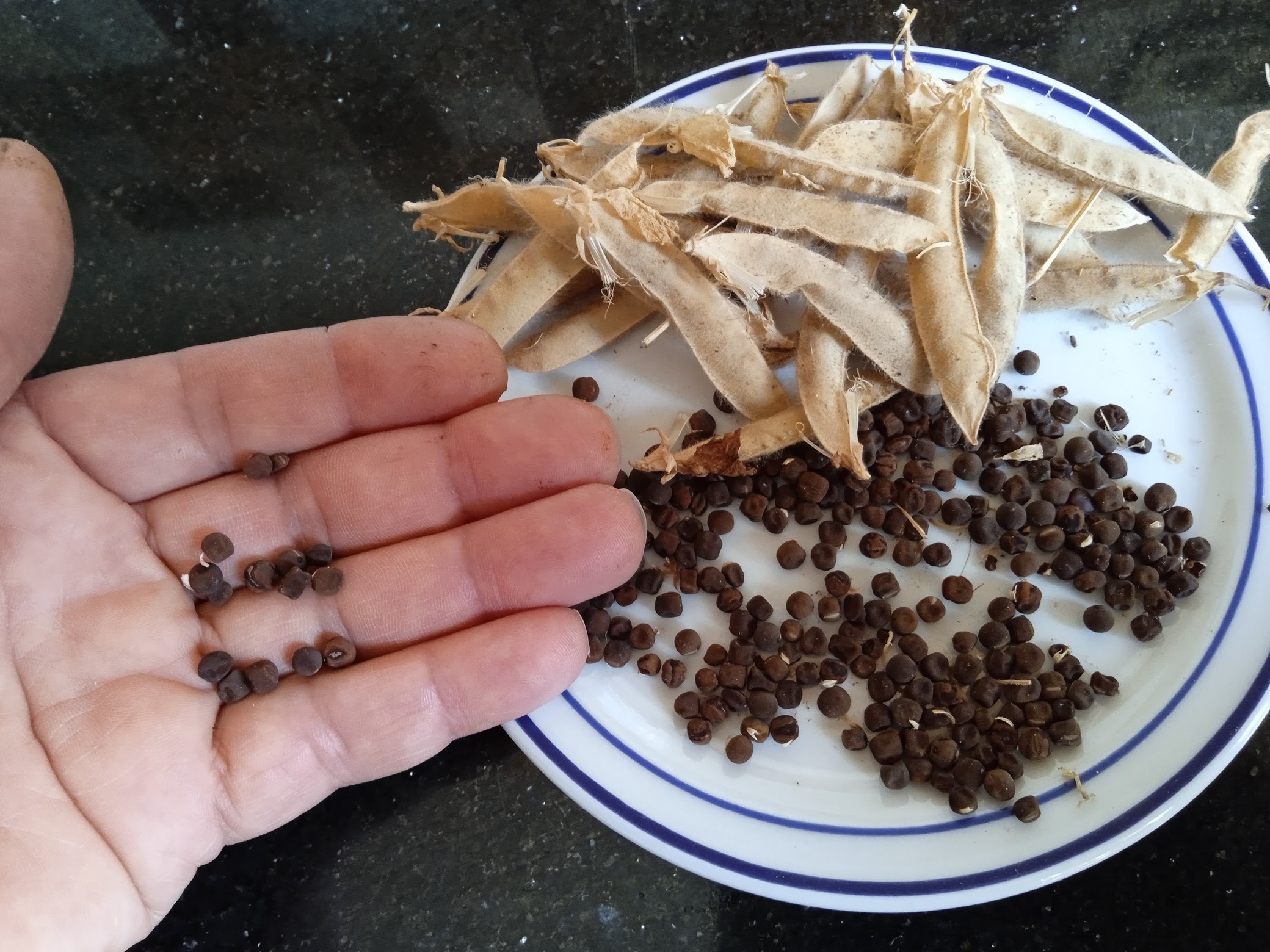About Sweet Peas
Sweet pea, (Lathyrus odoratus) is a flowering plant in the genus Lathyrus in the family Fabaceae (legumes), native to Sicily, southern Italy and the Aegean Islands. Sweet peas have around 110 species. Sweet Pea is a climbing annual flower grown for the delicious scent of its lovely flowers.
This annual flower is available in a huge range of colors, from pearly white through ice cream pastels to ritzy magentas and inky purples. Their beautiful blossoms are known by their honey and orange blossom perfume. The combination of the delightful scent and the ability to produce so many blooms for the gaden over a long period of cutting has ensured their popularity.
How To Grow Sweet Peas
Sweet pea grows from large, easy-to-handle, pea-like seeds. Still, they’re a bit tricky because they are slow to germinate. I've been growing sweet peas for many years. I’ve always have good success with them, but I feel like I’m getting better at growing it every year. Today i want to share with you all my tips from starting seeds indoors, planting seedlings, enjoying their beautiful and flagrant flowers, and harvesting seeds for next season.
When To Start Sweet Peas
Early sowing is one of the secrets to growing sweet peas!
- If you live in cold winter areas, start sweet pea indoors in early spring about 6-7 weeks before the last frost date, then plant out as soon as soil can be worked.
- If you live in mild winter climates, where the ground does not freeze, sweet pea seeds can be fall-sown directly into the garden from September through November to grow strong root systems and then they bloom from spring to early summer flowers with beautiful blooms.
Pre-sprouting Sweet Pea seeds Indoors
Give your sweet pea seeds a head start by germinating them indoors late January through March to transplant into the garden as soon as soil can be worked. By doing this, you will be sure that the seeds won’t rot before they sprout under the soil, resulting in a successful plant with beautiful flowers. It also guarantees that you won’t be wasting your time planting some seeds that might not even sprout at all!
Pre-sprouting sweet pea seeds indoors is a very important step.
What is Pre-sprouting!
Pre-sprouting means that you are sprouting the seeds in the absence of soil, and then planting the sprouted seed with a bit of root to soil, compost, or vermiculite.
- Always use high quality sweet pea seeds
- Put the seeds in a glass with water and soak them for 24 hours.
- The next day remove the seeds from the glass of water and drain them.
- Dampen a paper towel in warm water, and put it in the bottom of the plastic container.
- Sprinkle the seeds on the surface of the container and cover it.
- Place the seeds in a location that is warm in temperature, about 70 – 90°F (21 – 32°C).
- Keep the paper towel in the container moist, not soggy wet. The most important thing you have to know, is that if you over-soak the paper towel, always be sure to drain off as much as possible to keep the seed from drowning!
- Check your sweet seeds daily.
- Check your seeds after 2 days and you should see that they have swollen up.
- Depending on pre-germination and temperature. Within 3 to 5 days the seeds will start to germinate and produce the small shoots of the root and growing tip.
- At this point the sprouted seeds are ready to be planted into compost. The compost should be damp but not wet!
Watch How To Grow Sweet Peas Indoors Video
Transplanting Sprouted Sweet Pea Seeds in toilet rolls tubes
- You can use rolled-up newspaper or the cardboard tubes from toilet rolls or kitchen rolls.
- Half fill the tubes with pre moistened compost.
- Put 1 to 3 sprouted seeds into the tubes. when handling the sprouted seeds handle with care to avoid damage to the long roots when transplanting. Put more seeds than are needed in each cell, so later you’ll need to either (carefully) pull out the weaker ones from each container, by leaving only one healthy one, or you cut them off at the base!
- Cover the seeds with fine compost. The compost should be damp but not wet.
- Water the compost.
- Once they have germinated, you can place them by a window as long as they will not experience extreme heat from the sun during the day. Cooler night temperatures by a window are not a problem for sweet peas. You can also move them under grow light and make sure to keep them moist.
- When they grow and have four leaves, pinch them all back to two leaves to promote branching for nice bushy plants.
- Move out from the greenhouse, as sweet peas don’t like a lot of heat.
- To give seedlings a little boost you can feed them with very diluted Move out from the greenhouse, as sweet peas don’t like a lot of heat.
- To give a little boost you can feed them with very diluted fish fertilizer.
How to Harden Off Sweet Pea Seedlings for Transplanting
About 7 days before planting your plants outdoors, help acclimate them to temperatures, sunlight, and wind. This is the process of hardening off, or gradually acclimating you new plants to outdoor conditions. These plants have spent their short lives in a warm, sunny, protected place and won't fare well if you don't expose them slowly to the elements. Hardening off is the vital process of getting your seedlings ready for transplanting outdoors.
Planting Sweet Peas Seedlings In The garden
- Plant out your sweet peas seedlings once all risk of frost has passed in your area. After hardening sweet pea seedlings, to gradually acclimating your new plants to the conditions they will encounter outside.
- Pinch out the tips of young sweet pea plants when they reach about 10cm tall, to encourage bushy growth.
- Sweet peas love sun. Plant your sweet pea seedlings where they will receive full sun.
- Dig a hole for your sweet pea and add some well rotted chicken manure and mix it in with the soil.
- Remove the seedlings from the pot and plant in the ground at the base of your trellis or other support.
- Sweet peas are climbers so they need support when planting, you can use farm fencing or chicken wire.
- Water well after transplanting.
- Protect your seedlings from slugs, snails and birds.
- My top advice Cut and Cut flowers regularly as they fade to keep the blooms coming.
Where to Plant Sweet Pea Seedlings
Plant sweet peas seedlings aroud your garden or near your seating area so you can smell them as you sit and relax in the garden. Plant sweet peas in an open, sunny position in a well-drained but moisture-retentive soil. Sweet peas are greedy plants and need a good boost of rich nutrient matter to thrive. Six weeks before you plant the seedlings. Dig your planting area, digging the soil is essential for good sweet pea plants growth. While you are digging, incorporate organic matter such well-rotted manure or organic compost . I always use well- rotted chicken manure.
Growing Sweet Peas in Containers
Sweet peas are well suited to growing in pots or containers. When planting sweet pea seeds in containers, do not use garden soil. Instead, make sure you use a good, potting mix with a slow-release fertiliser mixed in. Garden soil can result in problems such as compaction and poor drainage. Many soil mix brands are readily available at garden centers.
- In a bucket, slowly add water while mixing the soil to make it evenly moist.
- You can use a 3 to 4 inch pot or container, it's a good size for starting your sweet peas.
- Fill the container with your pre-moistened mix and then lightly tap it on your work surface to settle the soil. The soil surface of a properly filled pot will be about 1 inch from the top of your container.
- Make a hole that is about two inches deep.
- Drop two or three sweet pea seed into the hole you made. I recommend sowing three seeds per hole so that, in the end, you have a plant even if the others does not germinate or dies.
- After sowing, cover your seeds with soil mix.
- Gently water your covered seeds. Use a watering can or hose with an attachment that diffuses the water so that it sprinkles like a gentle rain. This will prevent the water from washing away the soil or causing too much soil compaction.
- Sweet pea seed will germinate in soil at temperatures of 55º to 65º F or 13º to 18º C.
If you end up with three seeds, you will need to thin to one seedling after the first leaves have formed. Simply cut the weak seedlings with a scissor or pinch out the extra seedling at the soil line. Do not pull it out as this can disturb the roots of the remaining seedling.
After your sweet pea seeds have sprouted, you must provide them a good protection from birds, snails and slugs.
Sowing Sweet Peas Seeds in the Ground
You can soak the seeds in water for 24 hours to help boosting germination. You do not need to soak seeds in a temperate climate.
- After choosing a well-drained site in you garden. Prior to planting the seeds, prepare your soil by mixing in generous amounts of compost or well-rotted manure to a depth of 2 feet.
- Make holes with a shovel, drop in 2 to 3 seeds.
- Cover with soil and press down on the soil to firm it.
- Do not water for a couple of days after sowing. If the soil becomes dry, water gently to keep it slightly moist while the seeds are germinating.
- Once planted, germination can take 7 to 10 days, depending on the soil temperature.
- As seedlings emerge and grow, keep the soil moist.
- Water them at the soil level and do so in the morning.
- When the plants become established, mulch well to keep the soil cool and moist. . You may not need to water your sweet peas unless the soil gets dry.
- If you have added well aged manure or organic compost to the soil before planting, you do not need to fertilize the plants . But if you do want to add nourishment, use high potash feeds, as nitrogen feeds encourage too much top growth.
Pinching Sweet Pea Seedlings or Not!
Pinching out sweet peas is not required, but many gardeners choose to do so in order to keep sweet peas short and bushy.
How to Hand pinching off the top of sweet pea seedlings to promote lateral branching
When your seedlings have 3 pairs of leaves, you can pinch or cut off the top of the seedling, leaving 2 pairs of leaves. You should make your cut just above a pair of leaves. Pinching gives you a fuller plant by promoting lateral branching.
Watch In My Garden -Sweet Peas- Video
Sweet Pea Plants Care
Sweet peas are climbers. You must give them at least 6 feet of strong support. Some varieties may climb to 9 or 10 feet. I always use chicken wire to support them, but you can use other supports such bamboo poles in a tee-pee style, or a trellis.
- Tie the first few stems in to the support to give the plants a good start.
- When your plants start to flower, always cut off flowers when top blooms are open.
- Remove all dead flowers from plants to allow more to grow.
- Cut every 2 to 3 days and do not let them go to seed as once set they will stop flowering!
- To get longer stems take out the side shoots, remove the tendrils and tie the plants up.
- Keep the soil moist and feed every week with a high potash feed such as Maxicrop.
- Keep removing dead blooms from the plants as the more you pick the more flowers you get.
How to Collect Sweet Pea Seeds
When Do You Collect Sweet Pea Seeds?
You can begin collecting seeds from sweet peas after the seedpods turn brown and brittle. If you collect the sweet pea seedpods before they are completely mature, they won’t germinate. But, if you wait too long, the seedpods will break open and drop their seeds to the ground!
- Select a few of your healthy, robust and beloved sweet peas plants and stop deadheading them.
- Wait until the flower dies.
- The seedpods will begin to form.
Remember to have sweet pea seeds the flowers must remain on the plant until they form a seedpod, and the seed can be collected only when the seedpods on the plants have a brown color.
- Collect them on a dry day.
- Remove the seeds from their pods, dry them on a windowsill and store in paper bags until you a ready to sow them next season.
🛒 High Quality Sweet Pea Seeds, and fill your garden with masses of fragrant blooms that make perfect cut flowers 🛒
Comment below if you have questions about how to grow sweet peas!
Want to read more👉Sweet pea seeds
This web site is a participant in the Amazon Services LLC Associates Program, an affiliate advertising program designed to provide a means for sites to earn advertising fees by advertising and linking to amazon. Some of the links to products on this site are affiliate links. These are products that I've used or recommend based from homesteading experience. I do make a small commission (at no extra cost to you) from these sales.(alert-warning)




